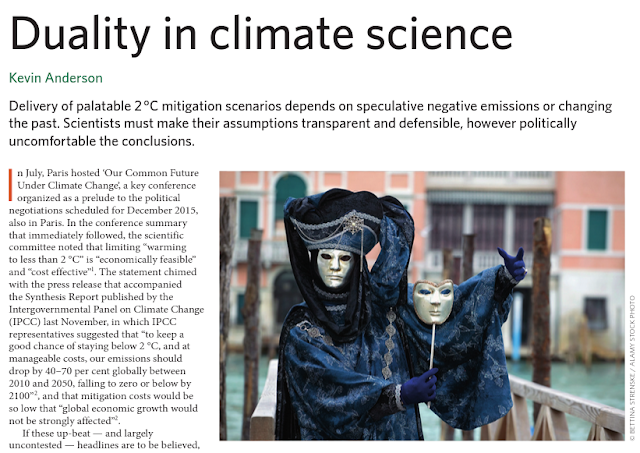Avoiding the climate catastrophe: not so easy as many people think
If these up-beat — and largely uncontested — headlines are to be believed, reducing emissions in line with a reasonable-to-good chance of meeting the 2 °C target requires an accelerated evolution away from fossils; it does not, however, necessitate a revolutionary transition in how we use and produce energy. Such conclusions are forthcoming from many Integrated Assessment Models, which are key tools for informing policy makers of alternative climate change futures.
But things are not so easy, according to Anderson:
In most Integrated Assessment Models, 2 °C carbon budgets are effectively increased through the adoption of negative-emission technologies. These technologies are currently at little more than a conceptual stage of development, yet are ubiquitous within 2 °C scenarios. Nowhere is this more evident than in the IPCC’s scenario database. Of the 400 scenarios that have a 50% or better chance of no more than 2 °C warming (with three scenarios removed due to incomplete data), 344 assume the successful and large-scale uptake of negative-emission technologies. Even more worryingly, in all 56 scenarios without negative emissions, global emissions peak around 2010, which is contrary to available emissions data.
